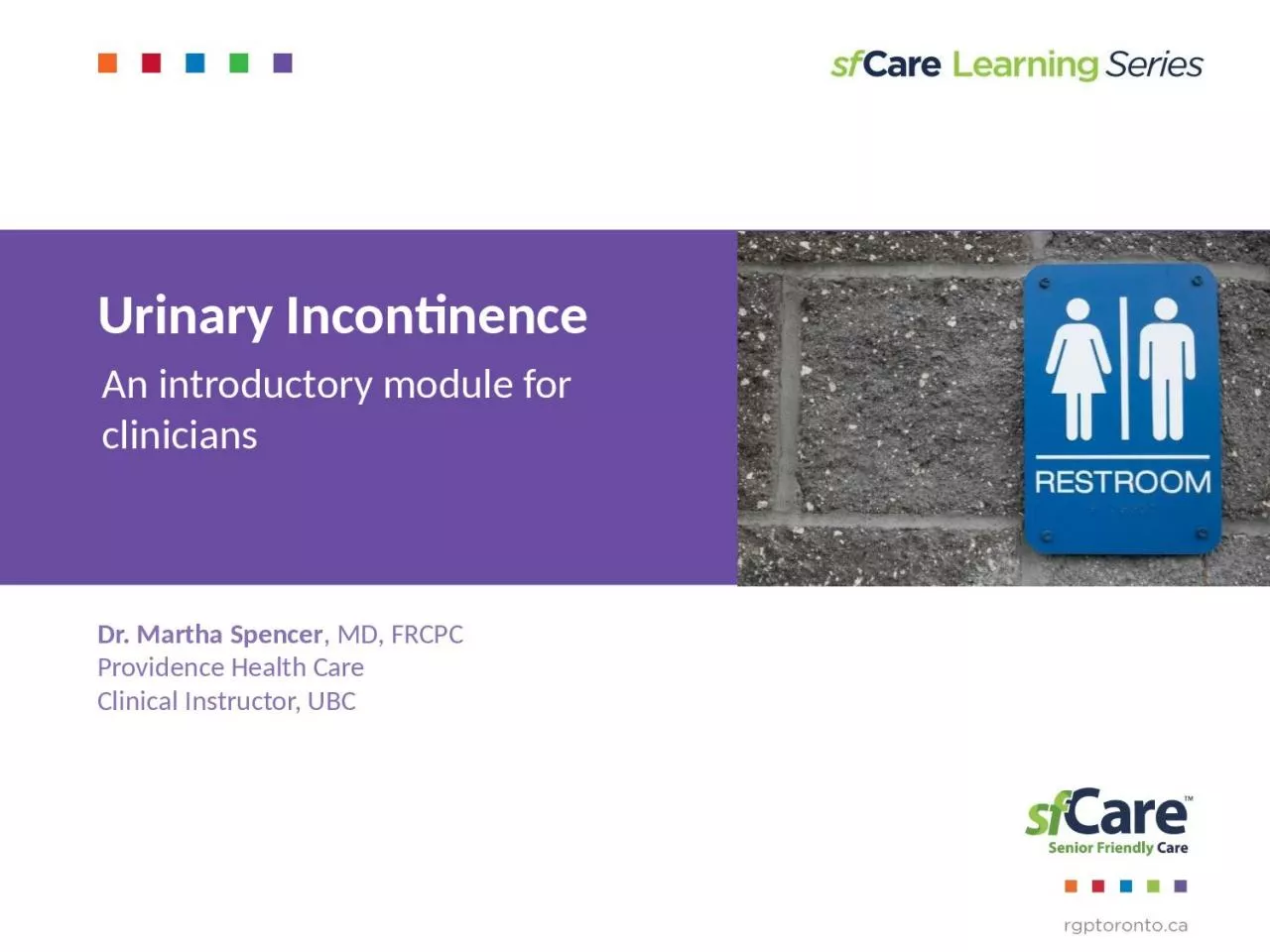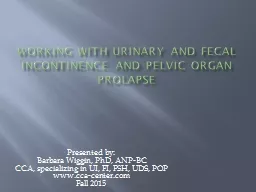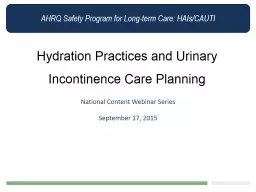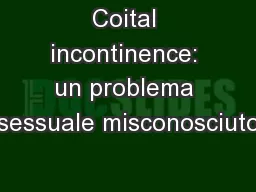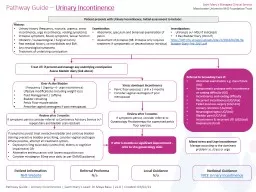PPT-Urinary Incontinence Dr. Martha Spencer
Author : deborah | Published Date : 2022-07-13
MD FRCPC Providence Health Care Clinical Instructor UBC An introductory module for clinicians This module is part of the sfCare approach PowerPoint Presentation
Presentation Embed Code
Download Presentation
Download Presentation The PPT/PDF document "Urinary Incontinence Dr. Martha Spencer" is the property of its rightful owner. Permission is granted to download and print the materials on this website for personal, non-commercial use only, and to display it on your personal computer provided you do not modify the materials and that you retain all copyright notices contained in the materials. By downloading content from our website, you accept the terms of this agreement.
Urinary Incontinence Dr. Martha Spencer: Transcript
Download Rules Of Document
"Urinary Incontinence Dr. Martha Spencer"The content belongs to its owner. You may download and print it for personal use, without modification, and keep all copyright notices. By downloading, you agree to these terms.
Related Documents

